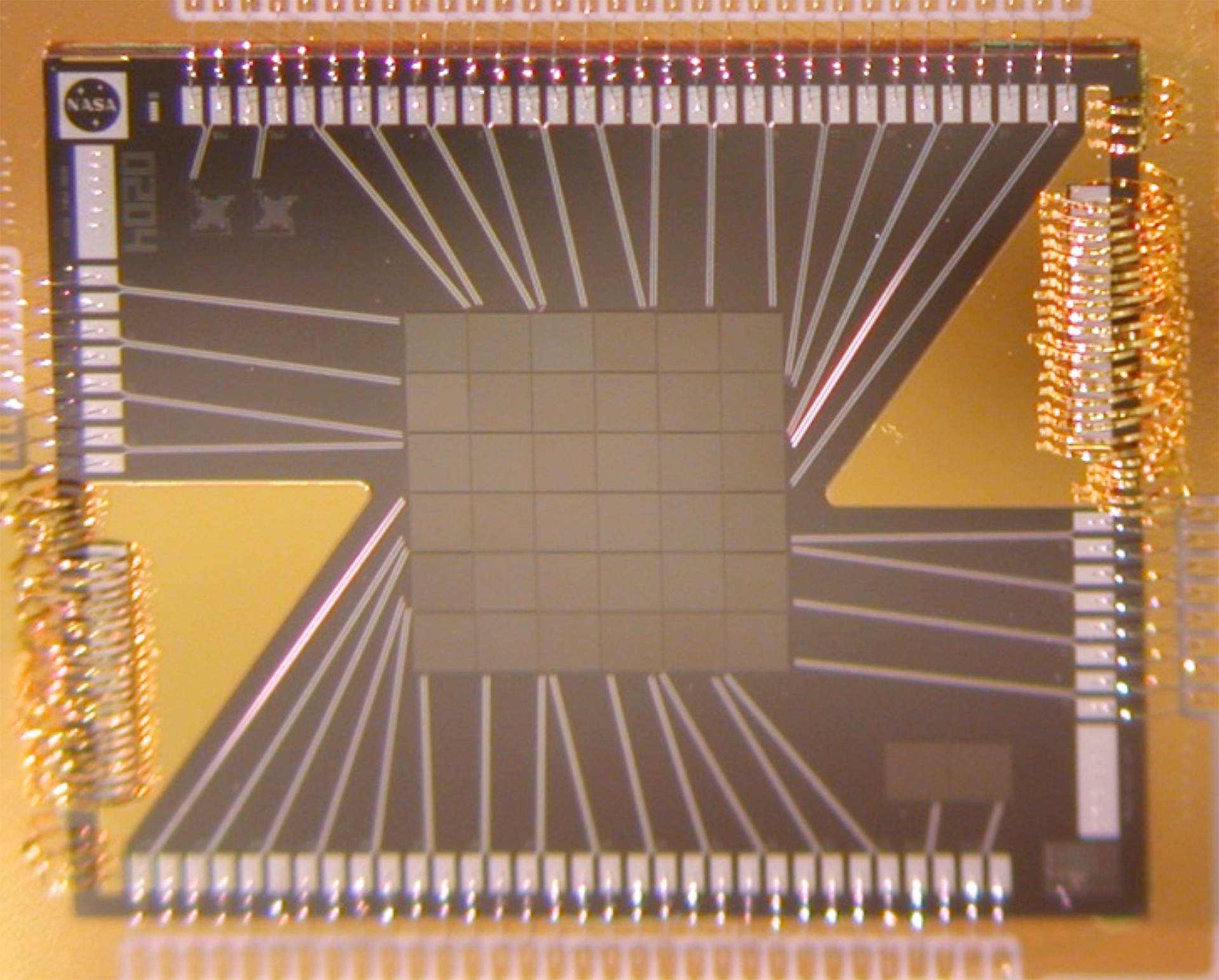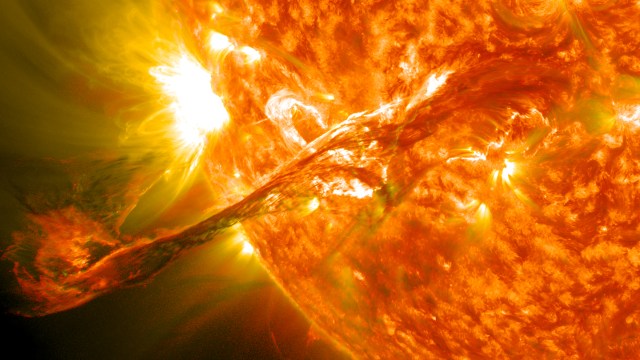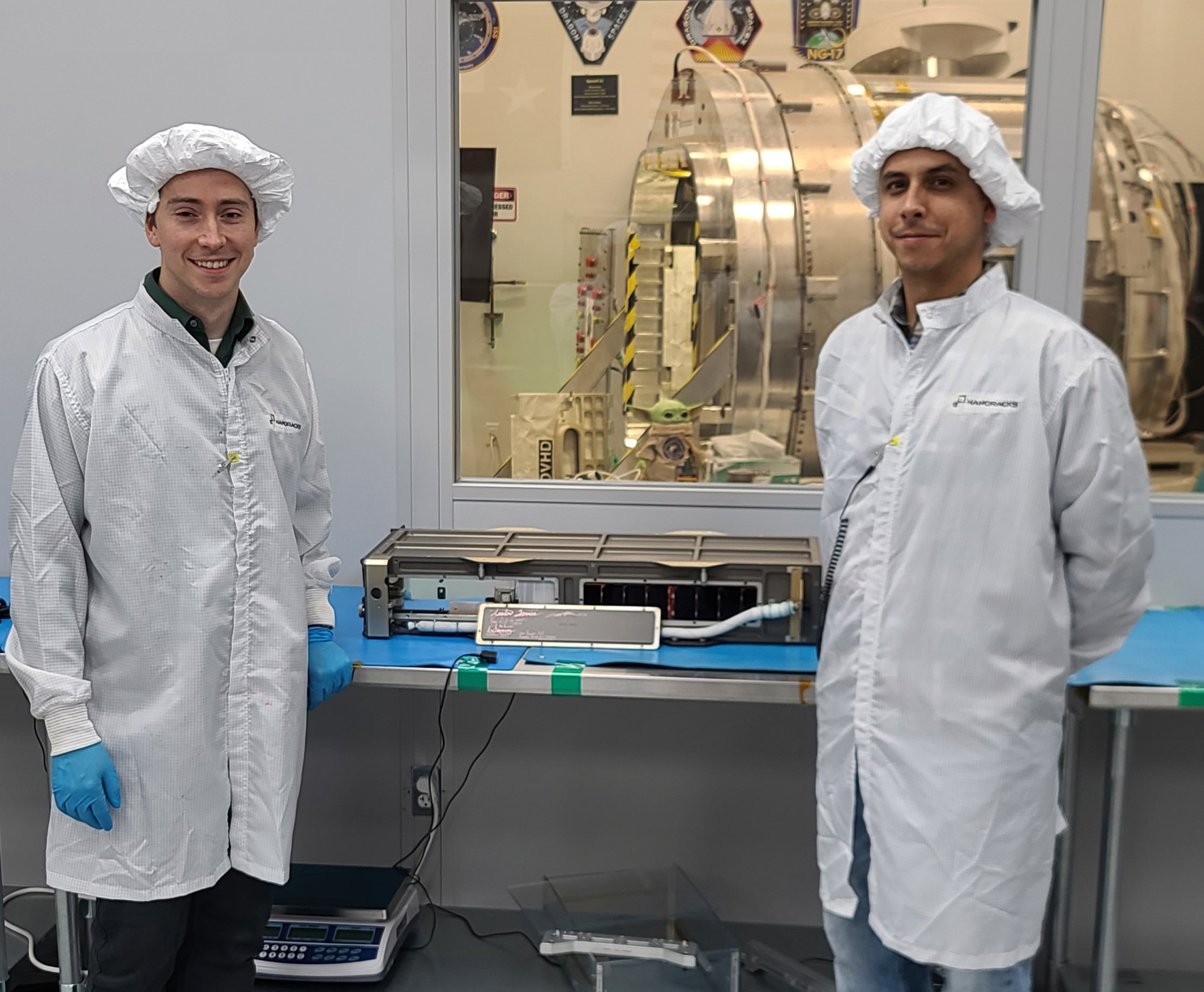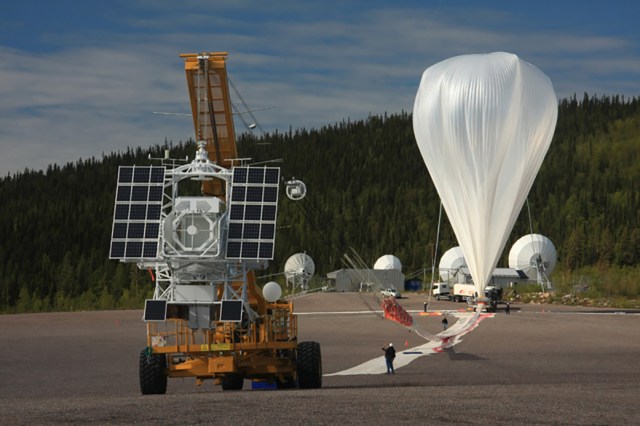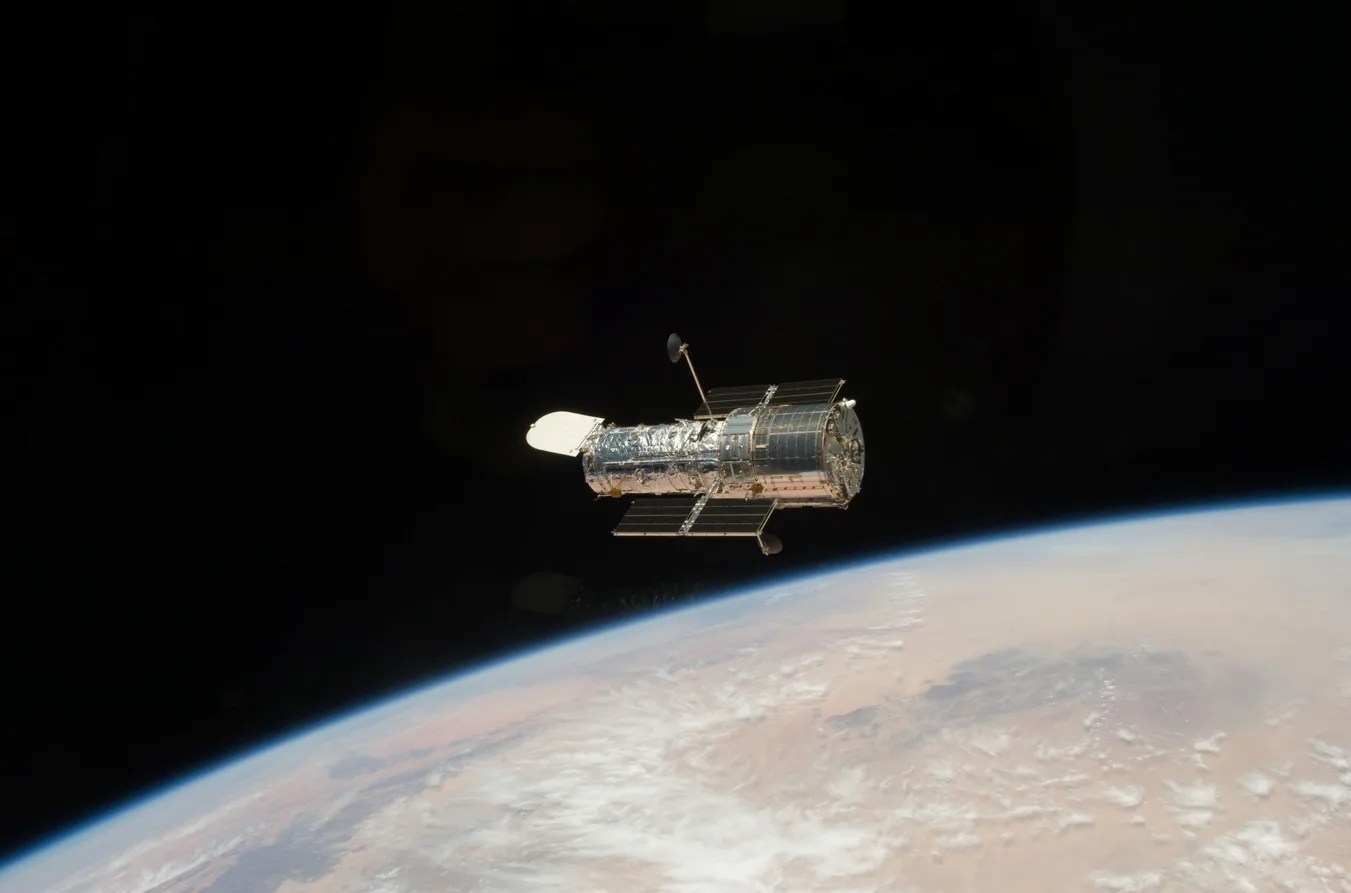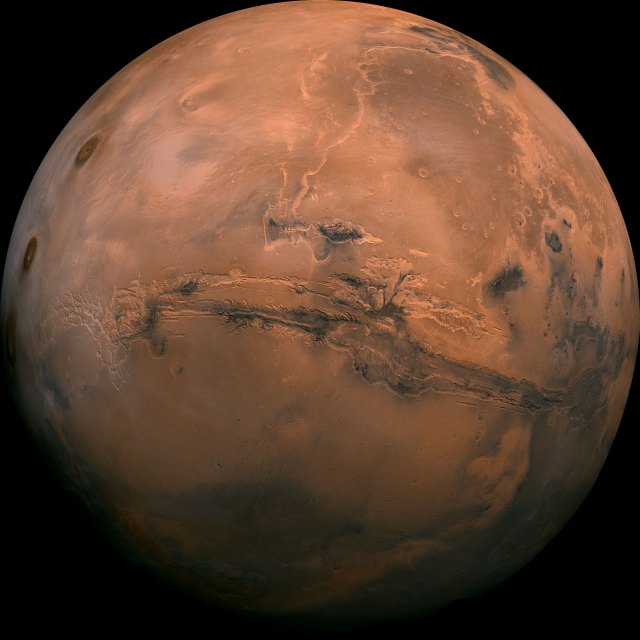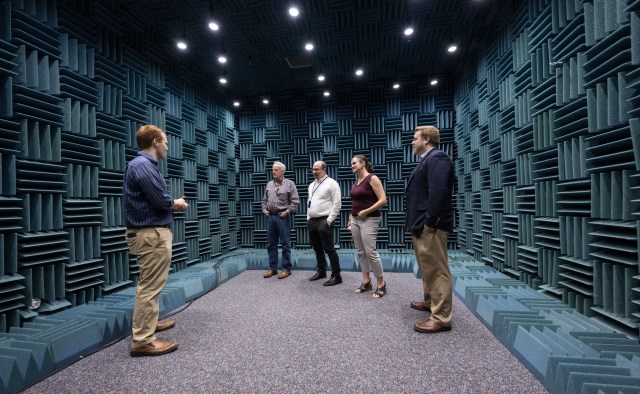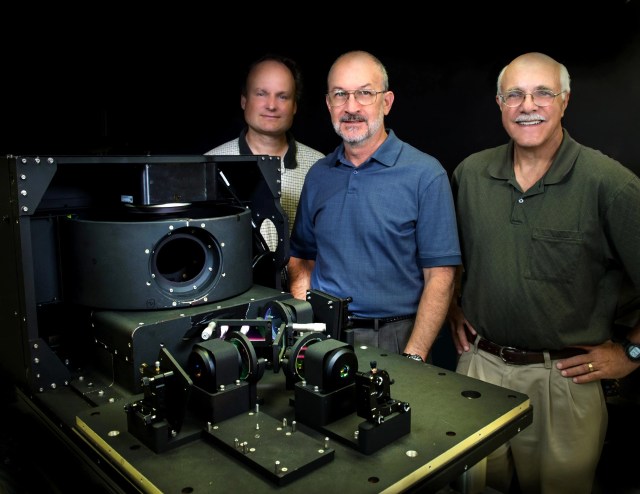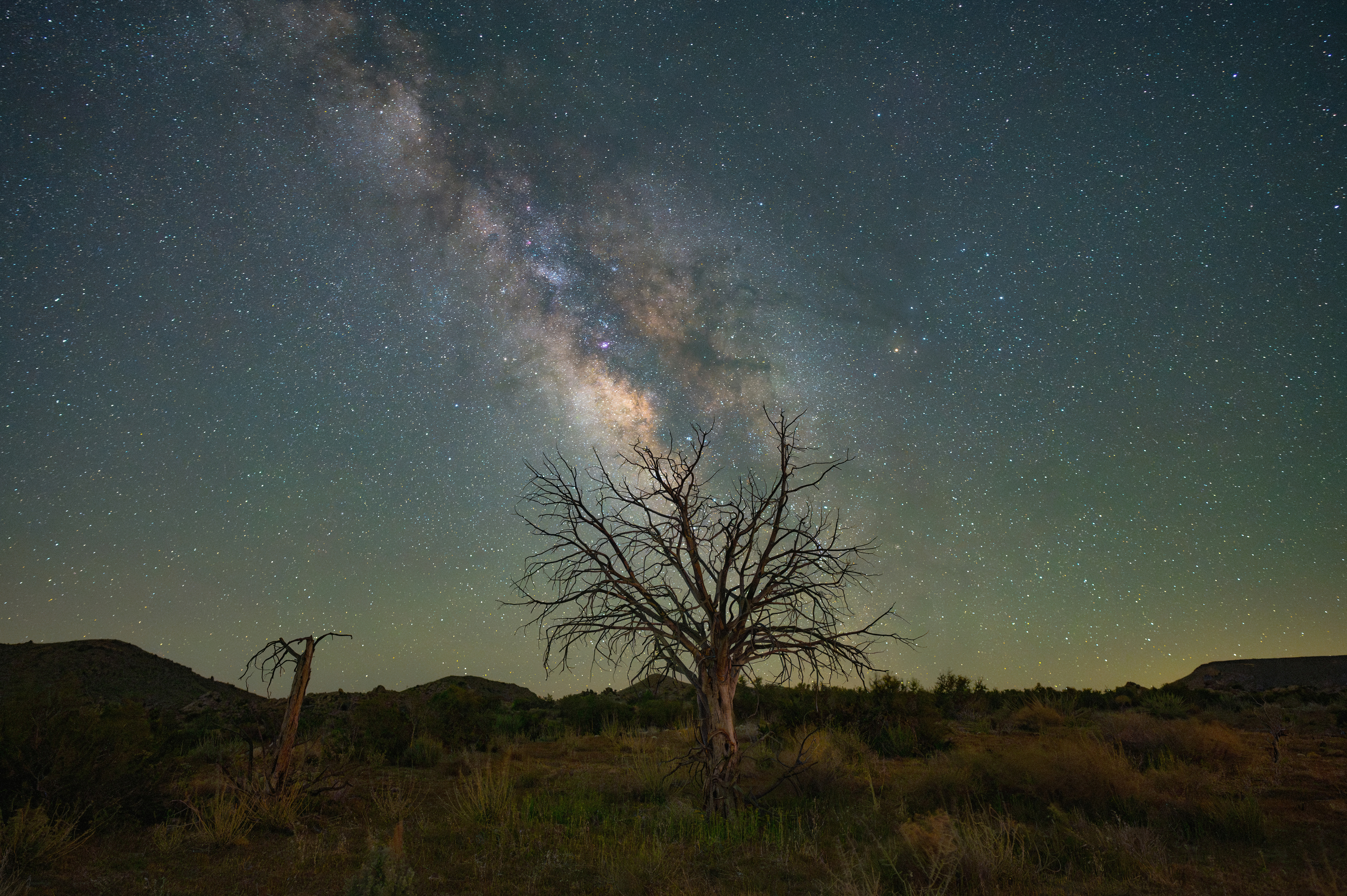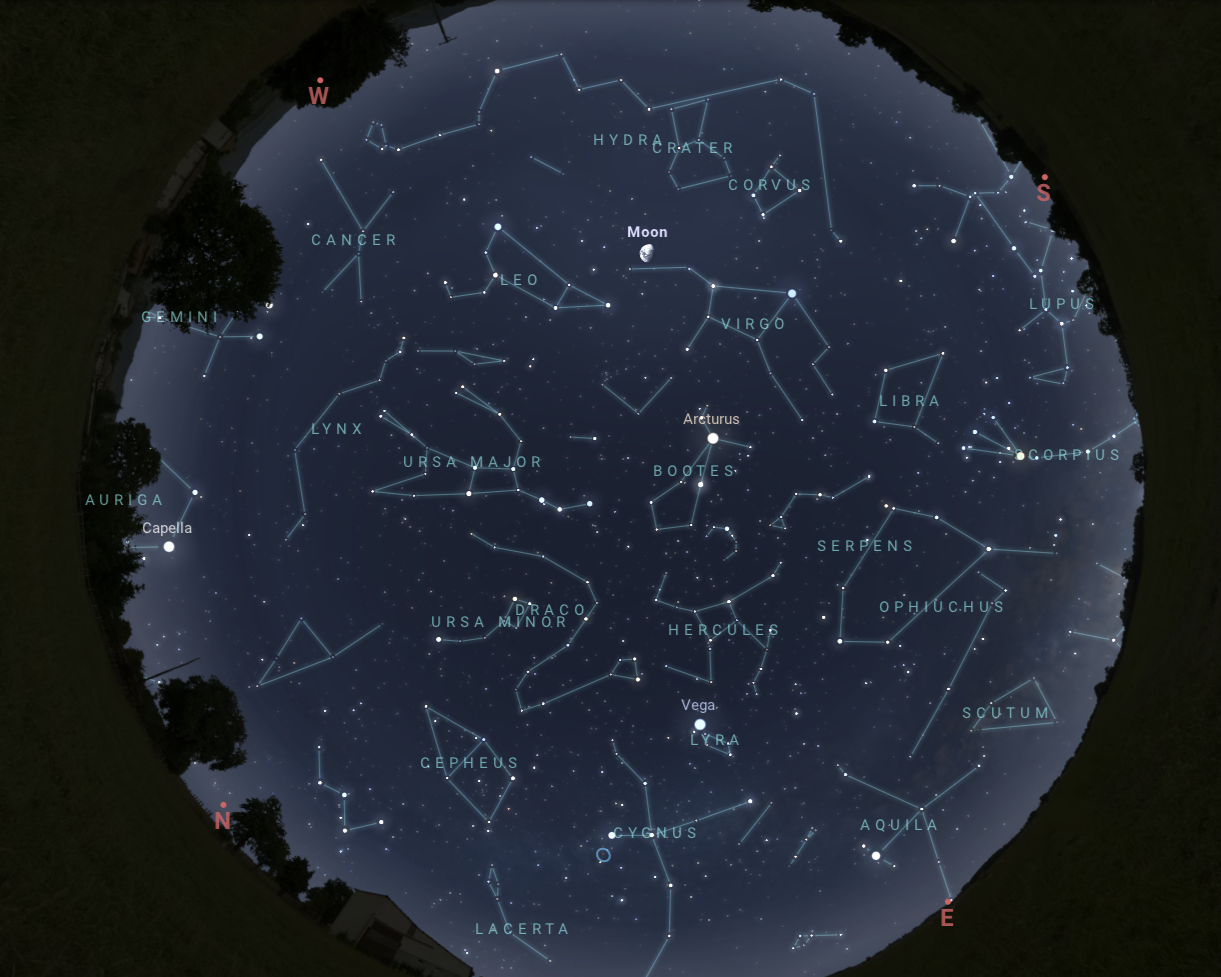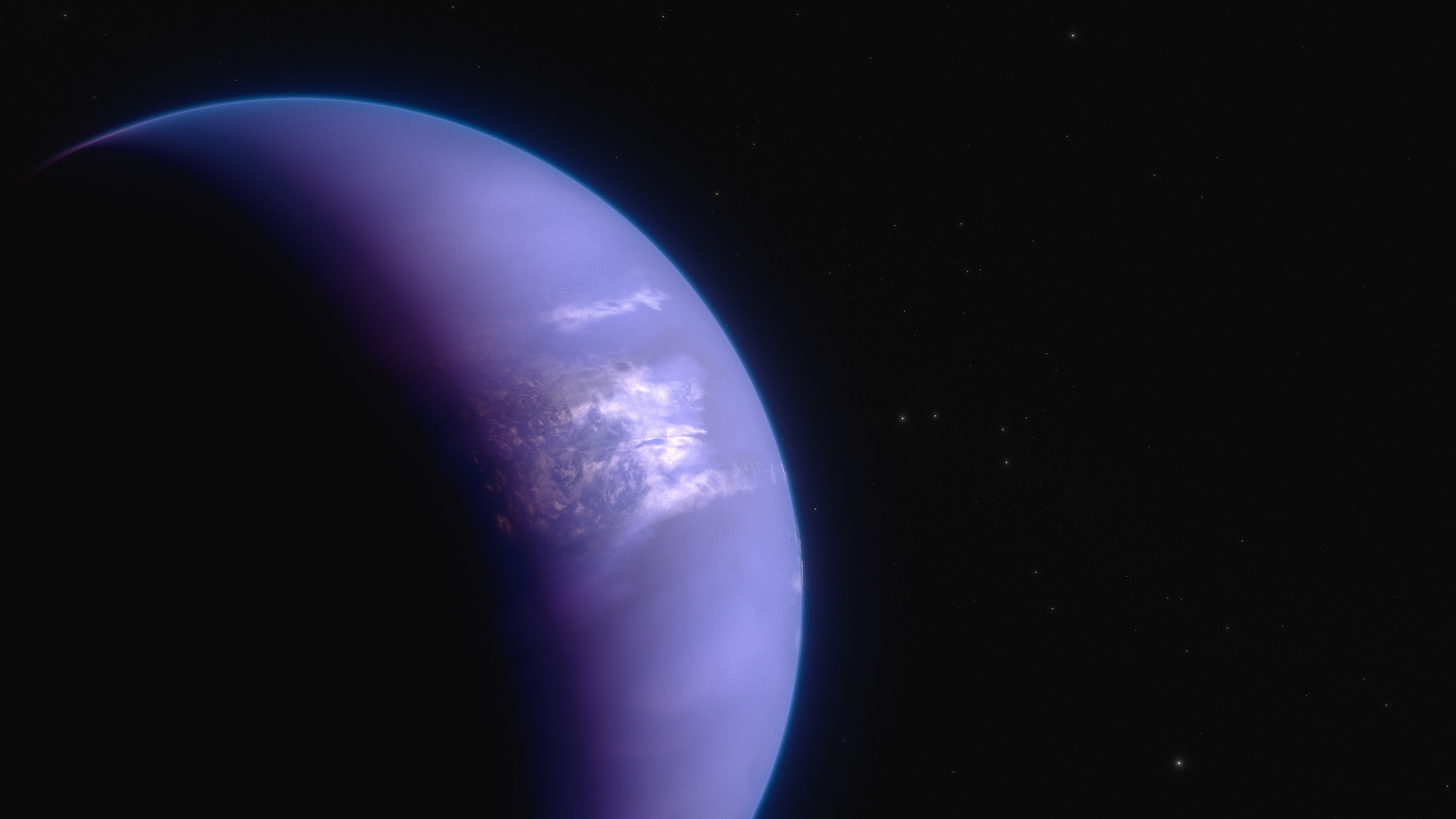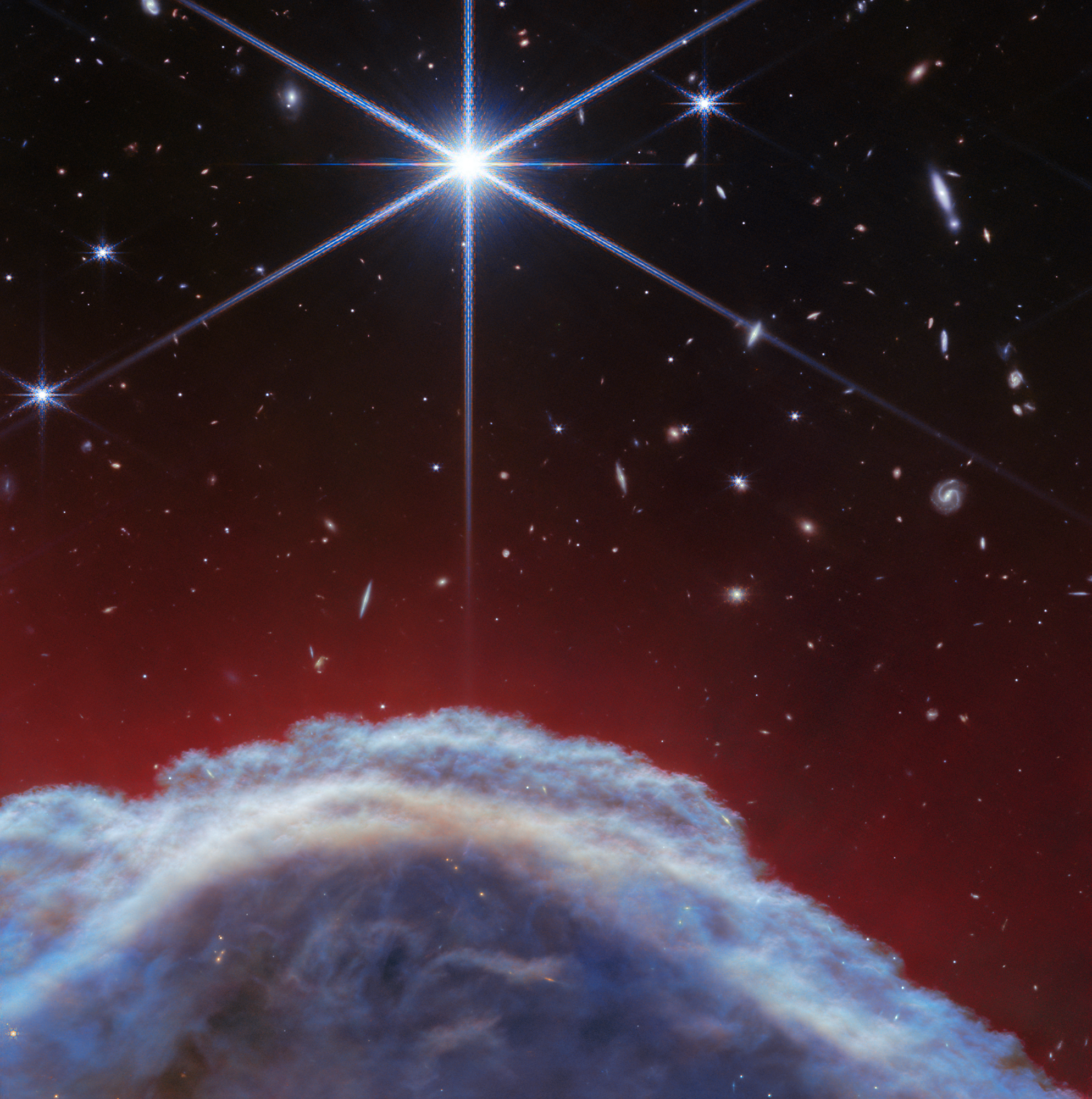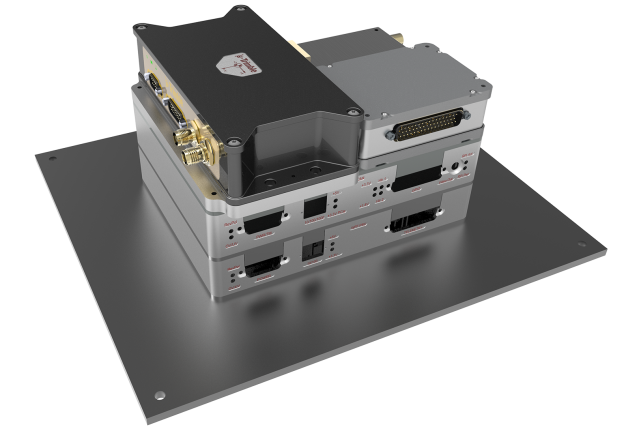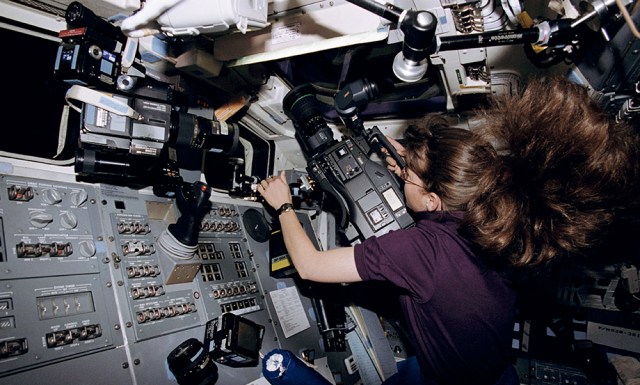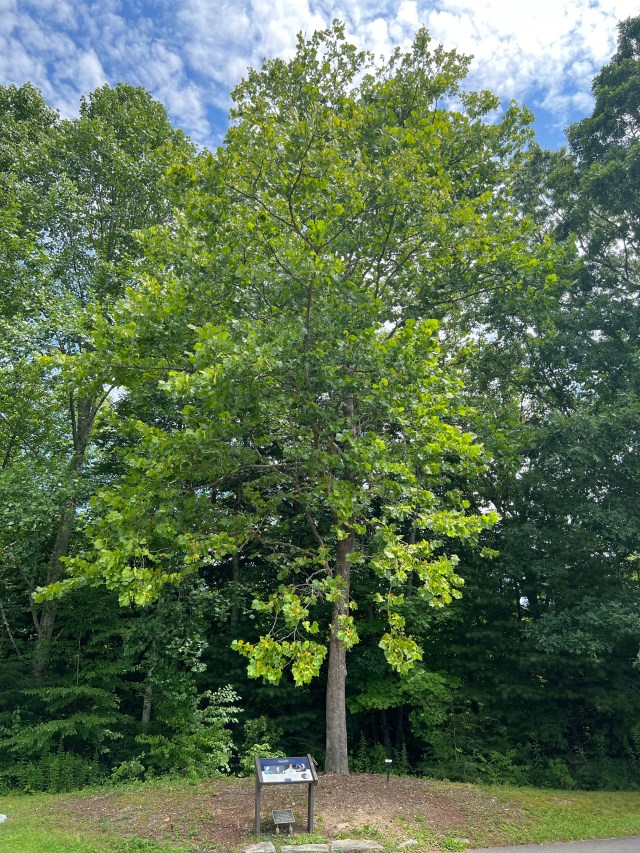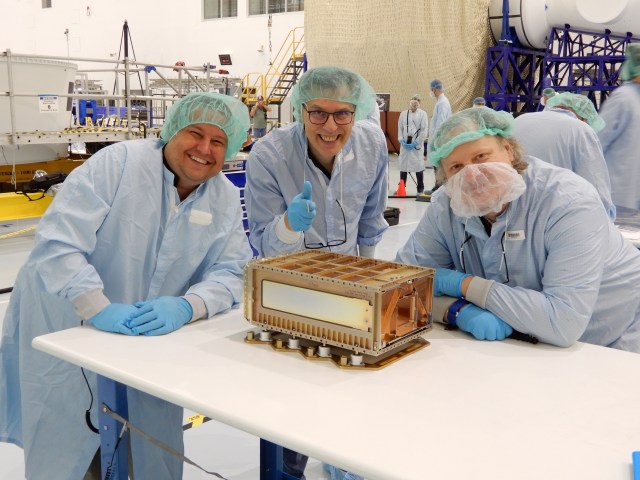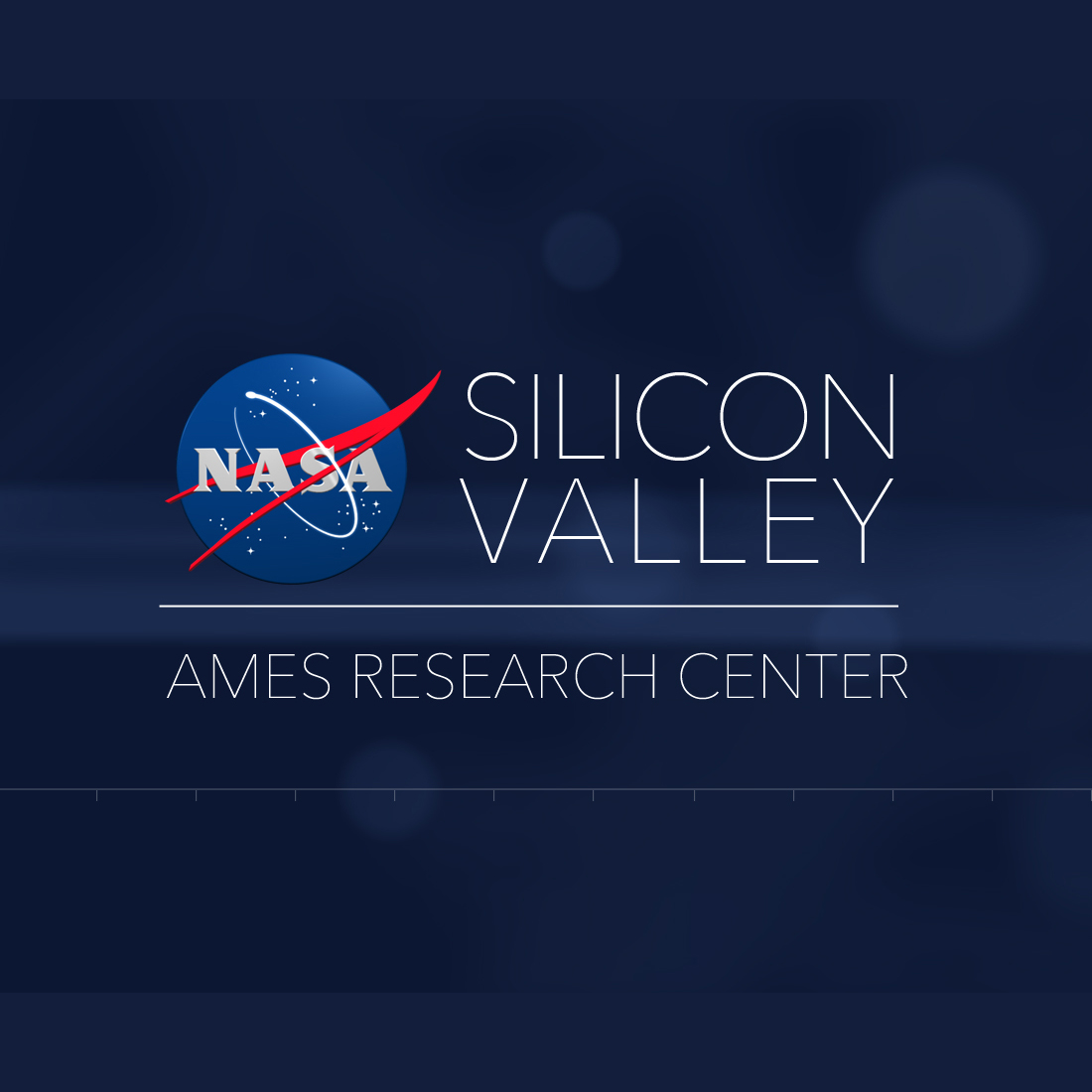A conversation with Elissa Quintana, NASA research scientist for the Kepler and K2 mission at NASA’s Ames Research Center in Silicon Valley. For more information on Kepler, visit www.nasa.gov/kepler.
Transcript
Matthew C. Buffington (Host): This is NASA in Silicon Valley, episode 12. Today’s guest is Elisa Quintana, NASA research scientist for the Kepler and K2 mission. We discuss how NASA’s exploration spans the universe and is looking beyond to worlds around other stars. We go into how NASA is able to detect and confirm exoplanets using various methods and space telescopes. Without any further delay, here is Elisa Quintana.
[Music]
Host: So tell us a little bit about like what brought you to Silicon Valley, what brought you to NASA. How did you end up here in the first place?
Elisa Quintana: Okay. So I studied physics in graduate school. And —
Host: Was that here, or where?
Elisa Quintana: In Michigan.
Host: Nice. Where on the hand? Everybody always says, “Where on the hand?”
Elisa Quintana: Ann Arbor.
Host: Ann Arbor.
Elisa Quintana: Ann Arbor.
Host: I was born in Ann Arbor.
Elisa Quintana: Really?
Host: Yeah. I’m a Midwesterner.
Elisa Quintana: Okay.
Host: So — but I grew up in Ohio. But —
Elisa Quintana: Okay.
Host: So cool. You went to school in Ann Arbor.
Elisa Quintana: Yeah. But up until that point, I had no idea that I was going to work for NASA. You know, it was never — I mean, I grew up in a small town in New Mexico where, you know, people are into agriculture. Like there’s not really science role models or anything. So it never really crossed my mind this is something I could do, really.
And so growing up, my grades were sort of rocky. It depended on my — like there were one — my mom found a report card one time, and there was one year I had straight A’s. And the next one it was like D’s and worse. And she’s like, “How did I not know?” So I was one of those students where —
Host: It could have gone one — you could work for NASA, or it could go completely different.
Elisa Quintana: Right. Yeah. And really, the reason is because I didn’t have a focus. I didn’t — you know, there wasn’t this big dream that I had and, you know, that I wanted to pursue. And I was just kind of lost.
Host: You didn’t look out in the stars and decide, I’m going to work for NASA.
Elisa Quintana: No. Not at all. I was just sort of lost. And it actually wasn’t until I was at a community college, Grossmont Community College in Southern California. And I think at some point I started taking some math classes. And I just sort of liked it. And I — and then I started taking physics classes. I didn’t do well. And —
Host: So this is like high school? No. You’re in community college. You just happened to be taking math classes that you enjoyed?
Elisa Quintana: Well — right.
Host: I’m trying to see… this is an interesting story. Go on.
Elisa Quintana: Well, I remember taking a calculus class. Well, okay. I was still lost, because my first year in community college I was taking all dance, like dance and modern dance and ballet and like one chemistry class.
Host: But your parents were very proud, I’m sure.
Elisa Quintana: They were just happy I was keeping myself busy with some type of school. And so I remember taking a calculus class and getting into it and realizing I kind of liked that challenge. And I took a physics class that I got like a C in, I think.
Host: Okay.
Elisa Quintana: And I liked it.
Host: It’s like solving puzzles.
Elisa Quintana: I mean, I think I always liked science when I was young, but I — it just wasn’t something I was going to ever do. Yeah. It was like solving puzzles. And slowly I started sort of getting interested in it more and more. And at some point, I decided like this — or I realized that, you know, this is something that interests me, and I could actually transfer to a college. And at the time, community colleges in California had what they call a TAG. It’s a transfer agreement program. And that’s really how I got into —
Host: Is that just with — like within the schools in California, or is —
Elisa Quintana: I believe so. I had wonderful and also very challenging classes at the community college. Whereas, you know, those types of intro classes — you get don’t get as much, you know, attention when you’re in these big schools.
Host: When you’re in an auditorium of 300 people, and they’re all freshmen and — or they’re trying to weed out who really wants to stay — you know, who really cares about staying at this university.
Elisa Quintana: Right. So I transferred to UC San Diego. And I learned — at some point, I learned that Sally Ride, you know, America’s first woman astronaut in space —
Host: Absolutely. From the Bay Area, I believe.
Elisa Quintana: — was a physics professor there.
Host: Oh, really.
Elisa Quintana: And so she was —
Host: Wait. Did Sally Ride teach one of your classes?
Elisa Quintana: She wasn’t teaching at the time.
Host: Okay. But she was —
Elisa Quintana: But she was an adviser. So I realized, oh, if I go into physics —
Host: That is the coolest thing in the world.
Elisa Quintana: Yeah. I thought, if I — because I still wanted — I didn’t know if I wanted to do aerospace engineering or — I wanted to do something in engineering with science. But I thought, “If I do physics, I could have her as my adviser. And that would be cool. Right?” And that’s what I did. And I ended up working —
Host: Did it work out?
Elisa Quintana: Yeah. She was my adviser.
Host: Oh, that is awesome.
Elisa Quintana: But it was actually —
Host: Of all the interesting ways to pick your major and to pick what you’re doing —
Elisa Quintana: Yeah. It was really silly. I remember going into a meeting with her, you know, with my spreadsheet and going, “Oh, yeah.” You know, she had to oversee that I was doing everything right. And she just liked checked things. She — “Yeah. You’re fine.” And she’s probably rolling her eyes, like, “Why did I even bother?”
Host: She’s like, “Go on your way.”
Elisa Quintana: When really I just wanted to meet her at that time. Right?
Host: Oh, that is too funny.
Elisa Quintana: So she had a program that was sort of her pet project at UC San Diego. And it was a space-related program. It consisted of a camera on the space shuttle. Because at the time, they were still doing space-shuttle launches. And the space station Mir, the Russian Mir, was still up.
And so she had this program where they would use cameras on board those that looked at earth. And she would involve middle-school students across the country to participate in this program and do sort of remote sensing. And so the kids would go, “Oh, I want to study life on Galapagos Islands.” And then we had a little miniature mission operation center at UCSD where we would coordinate and figure out where the space-shuttle trucks were going over. And, you know, we would go to Johnson. And so it sort of made us feel like we were in this little mission operation center.
Host: A little mini space camp for college students.
Elisa Quintana: It was pretty much that.
Host: Cool.
Elisa Quintana: And ever since then, I’ve been affiliated with NASA in some form.
Host: And then that brought you all the way to Ann Arbor. And then was that for a masters or doctorate or —
Elisa Quintana: Both.
Host: Both. Oh, there you go.
Elisa Quintana: Yeah. So I went to Michigan. I thought — I grew up in San Diego and went to college there. And I thought I’d try something new. And so I went to Michigan. And I know you were born there, but it was — yeah.
Host: I was young.
Elisa Quintana: I think I had a little culture shock. Because —
Host: Coming from Southern California to Michigan — yeah. There’s going to be some culture shock.
Elisa Quintana: And — yeah. It makes me sound bratty, but I really — it was the first time I was away from home. And, you know, it was the first year of grad school. And grad school is hard at the beginning. And so I was kind of depressed and, “Oh, I don’t know. I don’t like it.”
But — and so I found a way — I found out that NASA had these fellowships for graduate students. I’m not sure if they still have them. They’re called GSRPs, Graduate Student Researchers Program. And then it allows graduate students to interact with a NASA scientist at a center. Normally how it works is you stay at your institution, and you go there for a summer. But I somehow managed to do it opposite. So —
Host: Oh, really? So you had to stay at a NASA center and then go back to school every once in a while?
Elisa Quintana: And so I arranged — and my first choice was actually JPL. I thought — I knew I wanted to come back to California.
Host: LA. Wonderful weather.
Elisa Quintana: And I remember spending so much time on this application. It was to do radio science. And as a last-minute backup, I wrote one for NASA Ames.
Host: Awesome.
Elisa Quintana: And I spent probably weeks on this first one. And then I’m like, “Oh, I’ll just do — you know, just in case.” And then I didn’t get the one I wanted, but I got the one up here in Bay Area, which — at the time, I was kind of shocked. I didn’t know what to think of it.
Host: Yeah.
Elisa Quintana: But it was such a blessing in disguise. Because it was on exoplanets. Exoplanets were just starting out. And so I sort of — yeah. I sort of got here by just a lot of random incidents.
Host: That’s a lot how life is. You know, things just kind of stumble together. And what you think is like a disappointment ends up being a really cool opportunity that you didn’t even realize.
Elisa Quintana: Yeah. And I had heard about exoplanets, because Sally Ride had one graduate student when I was there, and one of his projects was to do something with exoplanets. And I remember he showed me this plot of the planets. And so this was 1996, I think. And there were maybe six or seven exoplanets. But I had never — just that thought had never crossed my mind there could be other planets around other stars.
Host: Yeah. This is just for the people — if — like, you know, most people, I think, listening would be familiar with exoplanets, but — like planets around other stars and other solar systems. And that was a big thing of what the Kepler, which you’re working on now — that’s a big thing of like — it’s hunting for, you know, exoplanets, hunting for other planets.
Did you — when you started at Ames, was it as that project was getting off its feet — it was first proposed. Because I know it was like — it came up, and then it went down. It was like a whole mix of how it finally got funded and went through.
Elisa Quintana: Yeah. So when I came to Ames, it was actually to work on a project called Vulcan. It was a camera at Lick.
Host: Nice.
Elisa Quintana: And it was by — Bill Borucki was heading it. He’s the principal investigator of Kepler — of the Kepler mission. And it was basically to do some proof of concept. You know, could we use this transit photometry method? And transmit photometry is when you monitor the brightness of a star. And if you see little dips, it might indicate that a planet’s crossing in front.
Host: Because back then, like it was questionable if exoplanets were even a thing. Like a lot of people thought they would be, but there was no proof. And it wasn’t really sure.
Elisa Quintana: So I guess — yeah. It’s funny when people talk about the first exoplanet, because — so the first exoplanet found —
Host: Wasn’t it like a false positive or something or —
Elisa Quintana: Yeah. So there was — 51 Peg was announced in 1995. And that was sort of the big news. Right?
Host: Yeah. We proved this.
Elisa Quintana: And then there were planets found around a pulsar a few years before that. But then there was a group in Canada and Dave Latham at Harvard CFA that both discovered objects that later — that were — in the ’80s, late ’80s, that later turned out to be exoplanets.
Host: So they just — they didn’t really understand what they had discovered.
Elisa Quintana: Yeah. Well, one — I guess —
Host: Or they thought it was something else.
Elisa Quintana: The Canadian group — I think they thought it was a planet and later retracted it, because it wasn’t — the —
Host: They weren’t sure enough.
Elisa Quintana: They weren’t sure enough. Latham’s — I think it was a brown dwarf at first and it turned into a planet, I believe.
Host: Like a hot Jupiter or something like that.
Elisa Quintana: Yeah. And so nobody really — I mean, how do you say what’s the first? But —
Host: Yeah. How would you know? It’s not until after you get all this other info that you look back like, “Oh, yeah.”
Elisa Quintana: Yeah. Right.
Host: “They were right. They were on to something and didn’t even know it.”
Elisa Quintana: But regardless, you know, 25 years ago, we didn’t have any.
Host: Yeah. Nothing confirmed.
Elisa Quintana: And we knew of the nine planets in our solar system. Right? And —
Host: Back then it was nine.
Elisa Quintana: Oh, so going back to Vulcan. So Bill — at the time, Bill Borucki had been proposing Kepler for a long time. I’m not sure when it actually got approved. By the time I arrived, it was in 1999. There were some people ramping up from this Vulcan project into Kepler and just starting out. And so I didn’t start working —
Host: Just kind of transitioned from one project with exoplanets to another one, to the telescoping —
Elisa Quintana: So there was a handful of people working on Kepler back then. But I didn’t really join the team until 2006. And mainly I was working on planet formation models for my thesis.
So I worked with Jack Lissauer. He does planet formation. Basically he’s known for, you know, developing theories of planet formation in our solar system. And once all these planets started coming out, and you see all these oddballs, it basically made everyone rethink theories. And so it’s been really fun. It’s been fun participating in Kepler, and it’s also been fun looking at the evolution of these planet formation theories.
Host: Well, I would imagine when it first started off, people — I mean, you would assume that planet formation forms the same way as it does here, you know, rocky planets towards the center, more bigger gaseous things outside. But as I understand it, like some of the first exoplanets found were the big Jupiter-like ones.
Elisa Quintana: That’s right.
Host: And some of them were really, really close. And it’s like, “Oh, wait. Aren’t these gassy ones supposed to be on the far outside? Like maybe we’re wrong on this.”
Elisa Quintana: I think that was one of the biggest surprises. And it’s almost comical that the first planet we found was like Jupiter in a four-day orbit. And it’s — you know, and then you wonder why people were doubting it.
Host: So it had to have been super close. How does something not like get absorbed by that star? I think that’s the question.
Elisa Quintana: Yes. Nobody — yeah. People are still actually trying to figure that out.
Host: So like — so what have you guys learned like from, you know, your thesis and trying to figure out these models of how solar systems form? What are some of the things that you guys have learned? Is it just there’s a whole lot of diversity or —
Elisa Quintana: So as far as solar-type stars, we’re — well, we’re finding all types of diversity around all types of stars.
We — so Kepler observed for four years. We still don’t have enough information to know if Jupiters are common out where Jupiter is. That’s an 11-year orbit. You know, and so it’s only with radio velocity that we’re getting enough data for over 11 years so we can see if we are finding this.
Host: And the radio velocity — that’s different from the dip —
Elisa Quintana: Yes.
Host: — of light? So what’s the, go into that.
Elisa Quintana: So that’s — the radio velocity method is a different method where you can see changes in the stars —
Host: Is it the wobble?
Elisa Quintana: — gravity, due — yes.
Host: Okay. Because —
Elisa Quintana: Due to the planet tugging on it, basically.
Host: Okay. Because —
Elisa Quintana: So the star will — yes.
Host: Yeah. Because there’s different ways of detecting exoplanets. And you mentioned the first one. Is it the —
Elisa Quintana: Transit photometry.
Host: So that’s basically looking at a bright object, little dip. And so you know — or you can deduce that there was a planet going across.
Elisa Quintana: Yes.
Host: Then the wobble method, as I affectionately call it — the whole idea is a planet — like gravity between objects. It’s the planet’s tugging on the star just a little bit, and the star’s tugging on the planet. And so you just get — the star gets a little bit of a wobble in it.
Elisa Quintana: That’s right.
Host: Okay.
Elisa Quintana: And they use methods, spectroscopy, like to actually measure these little changes —
Host: Like how much wobble. It probably estimates how — what — how big the planet is, I’m guessing.
Elisa Quintana: So that’s interesting. So the wobble method will provide you with a minimum mass. And so, for example, Proxima b — they had a minimum mass of 1.3 earth masses. Kepler, another —
Host: And that was ESO the European Space —
Elisa Quintana: Yes. That was the roughly earth-sized planet found around Proxima Centauri, which is our closest star to our sun.
Host: Yes.
Elisa Quintana: But their method doesn’t get the size. And so Kepler and other transit photometry methods — they’re opposite. They only get the size. We don’t get the masses. And if you want composition, you know, it’s simple physics. The density — you know, you need a mass and a size.
It’s mass per volume. So you need a mass and a size in order to determine if it’s rocky, if it’s icy, if it’s a Jupiter-like, you know, or if it’s a Mercury. And so for someone to come out and say this planet is earthlike, you really need mass and size. And so the best planets are ones where you can get both transit observations and radio velocity —
Host: Combining these two —
Elisa Quintana: — measurements from the ground.
Host: — measures. Okay.
Elisa Quintana: And of the 3,300 planets plus that we have now, there’s a surprisingly small number of planets that we actually have both.
Host: Oh, really.
Elisa Quintana: Like I think it’s about several dozen for planets that are smaller than about two earth radii.
Host: Does Kepler get — like capture data for both of those types? Or is Kepler mainly just looking at transit methods?
Elisa Quintana: Kepler’s only doing transit.
Host: Okay.
Elisa Quintana: That’s right.
Host: But there’s other telescopes and other instrumentation. And it’s kind of like with all that data combined, you can get — you can come up with more than what somebody would discover on their own.
Elisa Quintana: Yes. So mostly it’s Kepler finding these planets, having sizes, and then astronomers getting Keck time or time on other telescopes to gather the wobble method, radio velocity measurements.
Host: I know. I butchered it. A lot of people — the Internet is exploding because I called it the wobble method.
Elisa Quintana: So for the planet Proxima b that they discovered, if it were to transit, you could get a lot more information about it. So right now it could be rocky, but, you know, it could even be like earth — three earth masses.
Host: Okay.
Elisa Quintana: We don’t — it’s a minimum 1.3 earth masses.
Host: Okay. That’s just the minimum. Okay.
Elisa Quintana: But the problem is the probability of it transiting. The probability of it crossing in front of its star from us here on earth is —
Host: Because that plane —
Elisa Quintana: — less than 2 percent.
Host: Oh, really.
Elisa Quintana: So it’s really small. But there are teams looking. David Kipping at Columbia has a group doing — monitoring looking for transits. So it’s like high risk, high reward. If they found it, that would be amazing. We could see, is it really earthlike and, you know —
Host: Oh, I imagine for, you know, the planet hunting that that’s a big deal of like, you know, that transit method. But like, you know, the orientation of what that star and its orbital plane is to us — we’re lucky if it passes in front. Because it could be having — planets could be rotating around but from — our point of view would be around it.
Elisa Quintana: Right.
Host: And we would never see that transit.
Elisa Quintana: Yes. And so that’s why Kepler has to look at lots of stars. Because the probability if it actually transiting is pretty low.
Host: So what are you looking at right now in a lot of your research?
Elisa Quintana: So since I’ve been at Ames, I’ve been working on both planet formation models and working on Kepler data, looking for planets. And what I like to do is sort of combine them. And so, you know, you start out with — you know, back when I first got here, we had this really nice model of how the solar system formed.
Basically it’s this core creation. You know, you have a disc around the sun. And basically bodies hit and grow and hit and grow and grow into planets.
Host: Yeah. Coalesce and then, you know — and the centrifugal force keeps it on the plane and —
Elisa Quintana: Yeah. So then we start finding all these different solar systems. And then — so we use that information to constrain our theories. We can also use our theories to sort of predict what we might find for NASA’s next missions.
Host: Which would be —
Elisa Quintana: And so — which — I guess the next mission will be TESS. It’s a Transiting Exoplanet Survey Satellite.
But one example would be M-dwarf. So we’re finding lots of planets around M-dwarfs.
Host: Clarify. M-dwarf —
Elisa Quintana: M-dwarfs are —
Host: Similar to our sun, bigger, smaller?
Elisa Quintana: M-dwarfs —
Host: I’m guessing smaller.
Elisa Quintana: Smaller. They’re stars that are smaller and cooler. So they range in size from 10 percent the size of our sun to 50 percent the size of our sun. And so they’re a whole different class of objects. But we’re finding lots of planets around these types of stars. And the reason that these types of stars are important is because most stars in the galaxy are M-dwarfs. So more than 70 percent of the stars in our galaxy are M-dwarfs.
Host: Okay. And so if those are having planets around them —
Elisa Quintana: Yes. That has huge implications.
And so if you take — if you imagine a disc around a sun-like star — and this is the model people have been using to form planets from — if you were to scale that down to sort of around an M-dwarf, then it doesn’t leave you enough material to really form an earth. And so — and people think that the discs scale with stars. You know, so the discs are — so when a star is newly formed, it usually leaves a residual disc. And then planets form from it.
Host: So for your big stars, big residual disc, bigger planets. Smaller, you get — everything kind of shrinks together.
Elisa Quintana: Yes. And so that’s been the idea. However, we’re now finding lots of earths around these small stars. And if theories are telling us —
Host: It makes you rethink.
Elisa Quintana: — we don’t have that much material to make them, you know, it’s a big puzzle. And so what that means — in fact, the Trapa system was an amazing discovery, because the Trapa star was 0.08 times the mass of the sun, which is literally the smallest a star can be and still burn. So it’s on the lowest size — lowest end of the M-dwarf.
Host: This is barely a star.
Elisa Quintana: Barely a star. And it has a system of at least three earths. There could be as much as five. And it’s just puzzling how they formed. We don’t know.
And so that’s sort of making us take our formation models and say, “Okay. We need to invoke some different mechanisms. They must have formed either, you know, very far and migrated inwards or something.” Right? And so that’s just one example, the M-dwarfs, that have just brought up all these new puzzles to planet formation theory. And we’re finding the discs — planets around two stars, circumbinary planets. And a lot of those planets we’re finding are sort of big gas — are —
Host: Giant.
Elisa Quintana: — Saturn or Jupiter-like planets. The orbit’s sort of almost at the stability limit. So if they got any closer, they wouldn’t be stable, because the binary stars would kick them out.
And so why aren’t we finding earths there? You know, it’s just — it’s this whole population that provides another puzzle for people to think about.
Host: Just back from when you’re in school, solving puzzles. And you’re just continuing that.
Excellent. So for anybody who’s interested in learning more about Kepler and about exoplanets, you can go to Kepler.NASA.gov. And if you have any questions for Elisa, there’s @NASAKepler. We are at @NASAAmes. We’re using the #NASASiliconValley.
Thank you so much for coming.
Elisa Quintana: Yes. Thanks for having me. This was fun.
[End]

